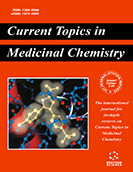Abstract
Tissue engineering approaches that combine biomaterial-based scaffolds with protein delivery systems have provided a potential strategy for improved regeneration of damaged tissue. The success of polymeric scaffolds is determined by the response it elicits from the surrounding biological environment. This response is governed, to a large extent, by the surface properties of the scaffold. Surfaces of polymeric scaffolds have a significant effect on protein and cell attachment. Multiple approaches have been developed to provide micrometer to nanometer scale alterations in surface architecture of scaffolds to enable improved protein and cell interactions. Chemical modification of polymeric scaffold surfaces is one of the upcoming approaches that enables enhanced biocompatibility while providing a delivery vehicle for proteins. Similarly, physical adsorption, radiation mediated modifications, grafting, and protein modifications are other methods that have been employed successfully for alterations of surface properties of polymeric scaffolds. The goal of this review is to provide an overview of the role of surface properties /chemistry in tissue engineering and briefly discuss some of the methods of surface modification that can provide improved cell and protein interactions. It is hoped that these improved polymeric scaffolds will lead to accelerated and functional tissue regeneration.
Keywords: Tissue engineering, biomaterial, growth factor, protein immobilization, biocompatibility, surface modification, protein delivery systems
Current Topics in Medicinal Chemistry
Title: Improved Biomaterials for Tissue Engineering Applications: Surface Modification of Polymers
Volume: 8 Issue: 4
Author(s): Dhirendra S. Katti, Rajesh Vasita and Kirubanandan Shanmugam
Affiliation:
Keywords: Tissue engineering, biomaterial, growth factor, protein immobilization, biocompatibility, surface modification, protein delivery systems
Abstract: Tissue engineering approaches that combine biomaterial-based scaffolds with protein delivery systems have provided a potential strategy for improved regeneration of damaged tissue. The success of polymeric scaffolds is determined by the response it elicits from the surrounding biological environment. This response is governed, to a large extent, by the surface properties of the scaffold. Surfaces of polymeric scaffolds have a significant effect on protein and cell attachment. Multiple approaches have been developed to provide micrometer to nanometer scale alterations in surface architecture of scaffolds to enable improved protein and cell interactions. Chemical modification of polymeric scaffold surfaces is one of the upcoming approaches that enables enhanced biocompatibility while providing a delivery vehicle for proteins. Similarly, physical adsorption, radiation mediated modifications, grafting, and protein modifications are other methods that have been employed successfully for alterations of surface properties of polymeric scaffolds. The goal of this review is to provide an overview of the role of surface properties /chemistry in tissue engineering and briefly discuss some of the methods of surface modification that can provide improved cell and protein interactions. It is hoped that these improved polymeric scaffolds will lead to accelerated and functional tissue regeneration.
Export Options
About this article
Cite this article as:
Katti S. Dhirendra, Vasita Rajesh and Shanmugam Kirubanandan, Improved Biomaterials for Tissue Engineering Applications: Surface Modification of Polymers, Current Topics in Medicinal Chemistry 2008; 8 (4) . https://dx.doi.org/10.2174/156802608783790893
| DOI https://dx.doi.org/10.2174/156802608783790893 |
Print ISSN 1568-0266 |
| Publisher Name Bentham Science Publisher |
Online ISSN 1873-4294 |
 27
27
- Author Guidelines
- Bentham Author Support Services (BASS)
- Graphical Abstracts
- Fabricating and Stating False Information
- Research Misconduct
- Post Publication Discussions and Corrections
- Publishing Ethics and Rectitude
- Increase Visibility of Your Article
- Archiving Policies
- Peer Review Workflow
- Order Your Article Before Print
- Promote Your Article
- Manuscript Transfer Facility
- Editorial Policies
- Allegations from Whistleblowers
- Announcements
Related Articles
-
Editorial (Thematic Issue:Neuroscience of Exercise: Focus on Cognitive and Brain Functioning)
CNS & Neurological Disorders - Drug Targets Erratum:
Endocrine, Metabolic & Immune Disorders - Drug Targets Candidate Circulating Biomarkers for the Cardiovascular Disease Continuum
Current Pharmaceutical Design P2X7 Receptor-Associated Programmed Cell Death in the Pathophysiology of Hemorrhagic Stroke
Current Neuropharmacology Amylin-Based Pharmacotherapy – Past, Present & Future
Immunology, Endocrine & Metabolic Agents in Medicinal Chemistry (Discontinued) Cardiosphere-derived Progenitor Cells for Myocardial Repair Following Myocardial Infarction
Current Pharmaceutical Design Review of Recent Clinical Developments and Patents for the Treatment of Autoimmune and Inflammatory Diseases by Mesenchymal Stromal Cells
Recent Patents on Regenerative Medicine The Treatment Targets of Asthma: From Laboratory to Clinic
Inflammation & Allergy - Drug Targets (Discontinued) The PIK3CA Gene as a Mutated Target for Cancer Therapy
Current Cancer Drug Targets Study of Possible Relation between Fasting Plasma Glucagon, Gestational Diabetes and Development of Type 2 DM
Current Diabetes Reviews Targeting the Noradrenergic System in Posttraumatic Stress Disorder: A Systematic Review and Meta-Analysis of Prazosin Trials
Current Drug Targets Role of Apoptosis in the Pathogenesis of Common Variable Immunodeficiency (CVID)
Endocrine, Metabolic & Immune Disorders - Drug Targets An Update on Clinical Drug Interactions with the Herbal Antidepressant St. Johns wort
Current Drug Metabolism AMPK Regulation of Glucose, Lipid and Protein Metabolism: Mechanisms and Nutritional Significance
Current Protein & Peptide Science Is There an Association between Periodontitis and Hypertension?
Current Cardiology Reviews Metabolomic Insight into Lipid and Protein Profile in Diabetes Using Mass Spectrometry
Mini-Reviews in Medicinal Chemistry Effect on Serum Uric Acid Levels of Drugs Prescribed for Indications other than Treating Hyperuricaemia
Current Pharmaceutical Design Editorial (Thematic Issue: The Changing Face of Metabolic Syndrome and its Components in the Light of Current Knowledge)
Current Vascular Pharmacology Interrelationship Between Periapical Lesion and Systemic Metabolic Disorders
Current Pharmaceutical Design 30 Years Lost in Anesthesia Theory
Cardiovascular & Hematological Agents in Medicinal Chemistry


























